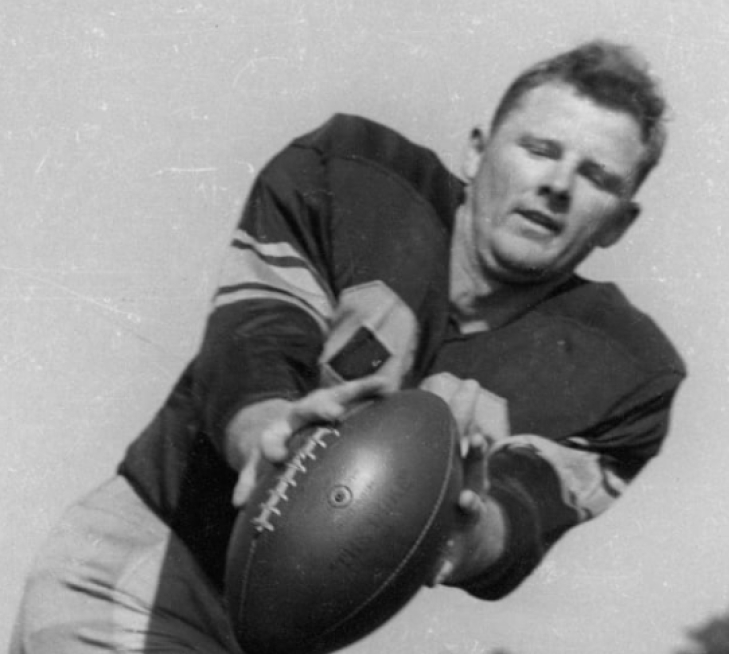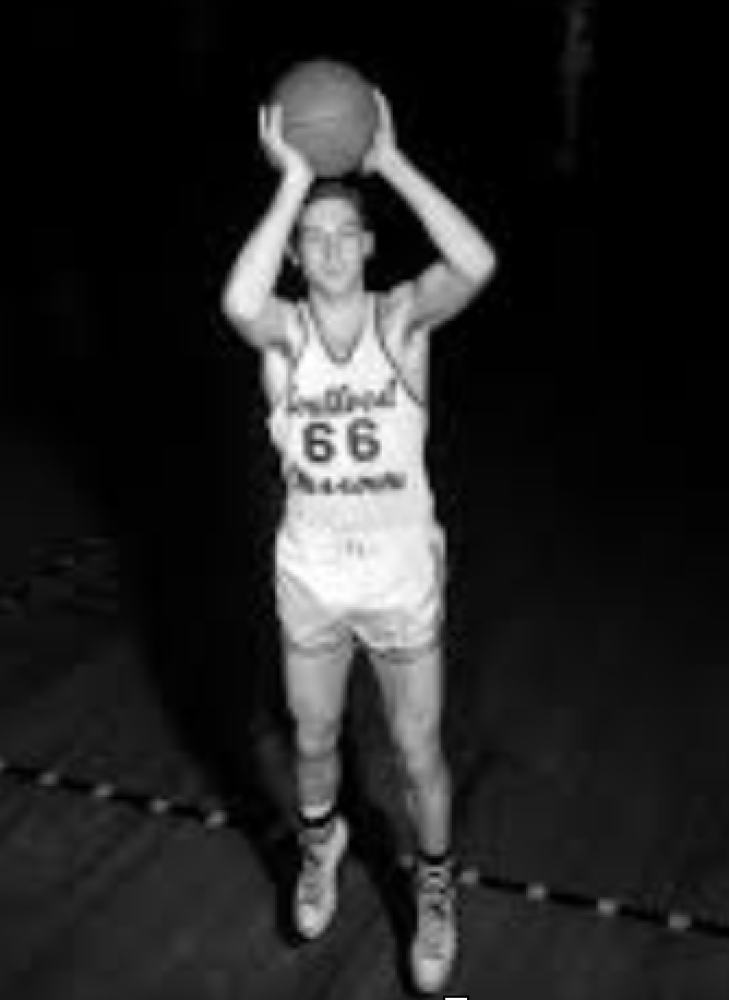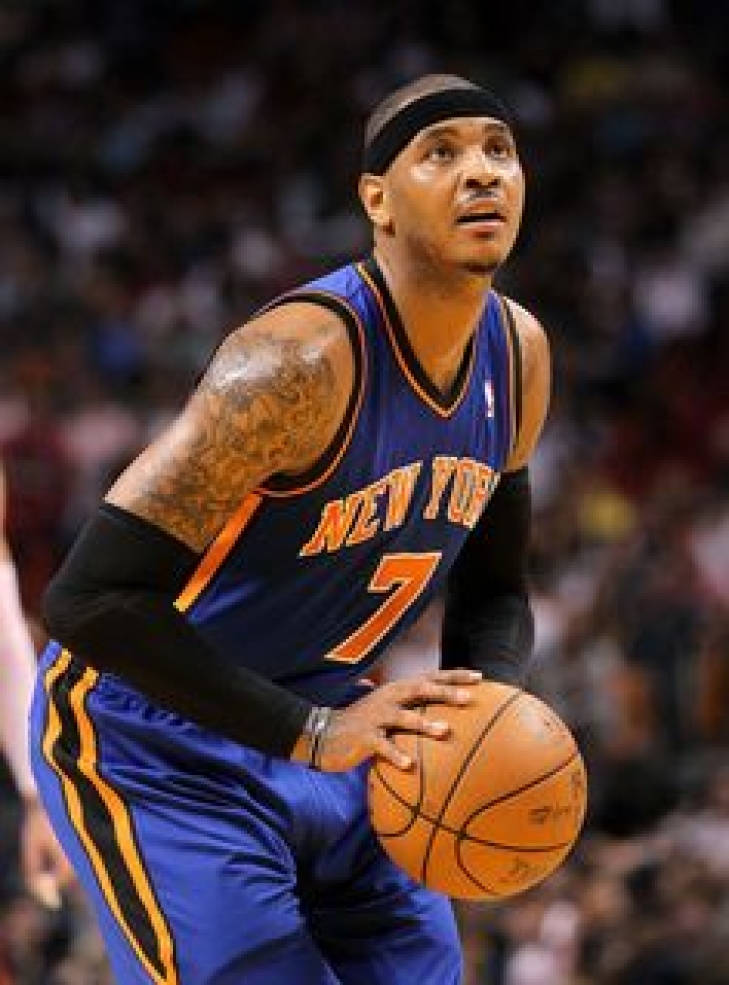
Committee Chairman
The Pro Football Hall of Fame Revisited Project: 1976 Preliminary VOTE
1976 PRELIMINARY RESULTS:
Thank you to all who participated in the Pro Football Hall of Fame Revisited Project. If you are still determining what that is, we acted like the PFHOF had its first class in January 1946.
We have completed the first 29 years thus far.
For “1976,” a Preliminary Vote with close to 100 players whose playing career ended by 1960. We are also following the structure in that players have 20 years of eligibility, and if they do not make it into the Hall, they are relegated to the Senior Pool.
Each voter was asked to select 25 names from the preliminary list, and the top 25 vote-getters were named Semi-Finalists.
A week later, the voters will be asked to pick 15 names from the 25 Semi-Finalists, and next after, they will pick five from the remaining 15. We will continue this process weekly until we catch up to the current year.
Please note that a significant change occurred “years ago,” allowing voters to submit less than the allotted spots.
30 Votes took place.
This is for the “Modern Era”
Bold indicates they advanced to the Semi-Finals:
*Indicates they have been removed from future ballots
|
Player |
Year of Eligibility |
Vote Total |
|
Tommy McDonald FL-WR |
3 |
24 |
|
Jerry Kramer G |
3 |
23 |
|
Alex Karras DT |
1 |
23 |
|
Billy Howton E-FL |
8 |
22 |
|
Del Shofner E-DB |
4 |
22 |
|
Paul Hornung HB |
5 |
21 |
|
Gene Lipscomb DT |
9 |
20 |
|
Joe Fortunato LB |
5 |
20 |
|
Jimmy Patton DB |
5 |
20 |
|
Eddie Meador DB |
1 |
19 |
|
Pat Harder E |
18 |
18 |
|
Tom Sestak DT |
3 |
18 |
|
Henry Jordan DT-DE |
2 |
18 |
|
Gino Cappelletti FL-SE-DB-WR-PK |
1 |
18 |
|
Pete Retzlaff E-HB-TE |
5 |
17 |
|
Alan Ameche FB |
11 |
15 |
|
Billy Shaw G |
2 |
15 |
|
Rosey Grier DT-DE |
5 |
14 |
|
Billy Wilson E-FL |
11 |
13 |
|
Charlie Conerly QB |
10 |
13 |
|
Bobby Boyd DB |
3 |
13 |
|
Tank Younger FB-LB-HB |
13 |
12 |
|
Abe Woodson DB |
5 |
12 |
|
Roger Brown DT |
2 |
12 |
|
Les Richter LB-C |
9 |
11 |
|
Cookie Gilchrist FB |
4 |
11 |
|
Art Powell E |
3 |
11 |
|
Dave Grayson DB |
1 |
11 |
|
Bucko Kilroy G-MG-T-DT |
16 |
10 |
|
Jack Kemp QB |
2 |
10 |
|
Fuzzy Thurston G |
4 |
9 |
|
Abner Haynes HB |
4 |
8 |
|
Vic Sears T-DT |
18 |
6 |
|
Bruno Banducci G |
17 |
7 |
|
Max McGee E |
4 |
6 |
|
Howard Mudd G |
1 |
6 |
|
Frankie Albert QB |
19 |
5 |
|
Jim Katcavage DE-DT |
3 |
5 |
|
Fred Arbanas TE |
1 |
5 |
|
Jerry Mays DE-DT |
1 |
5 |
|
Buster Ramsey G |
20 |
4 |
|
Harlon Hill E-DB |
9 |
4 |
|
Don Meredith QB |
3 |
4 |
|
Ray Bray G |
19 |
3 |
|
Les Bingaman DG-G-C |
17 |
3 |
|
Charley Hennigan FL |
5 |
3 |
|
Dick Modzelewski DT |
5 |
3 |
|
Goose Gonsoulin DB |
4 |
3 |
|
Ernie Ladd DT |
3 |
3 |
|
Bob Talamini G |
3 |
3 |
|
Billy Cannon TE-HB |
1 |
3 |
|
E.J. Holub LB-C |
1 |
3 |
|
George Ratterman QB |
15 |
2 |
|
Leon Hart E-FB-DE |
14 |
2 |
|
Abe Gibron G |
12 |
2 |
|
Marion Campbell DE-DT-MG-G-T |
10 |
2 |
|
Duane Putnam G |
9 |
2 |
|
Jim Ray Smith G-T |
7 |
2 |
|
Rick Cesares FB |
5 |
2 |
|
Earl Faison DE |
5 |
2 |
|
John David Crow HB-TE-FB |
3 |
2 |
|
Bob Talamini G |
3 |
2 |
|
Stew Barber T-LB-G |
2 |
2 |
|
Babe Parilli QB |
2 |
2 |
|
Gail Codgill SE-WR |
1 |
2 |
|
Ken Gray G-DE |
1 |
2 |
|
Bill Fischer T-G-DT |
18 |
1 |
|
Bobby Walston E-HB-K |
9 |
1 |
|
Bill Forester LB-MG-DT |
8 |
1 |
|
Walt Michaels LB |
8 |
1 |
|
Bob Gain DT-DE-MG-T |
7 |
1 |
|
Alex Webster HB-FB |
7 |
1 |
|
Archie Matsos LB |
5 |
1 |
|
Billy Wade QB |
4 |
1 |
|
Fred Williamson DB |
4 |
1 |
|
Clem Daniels HB-DB |
3 |
1 |
|
Sherrill Headrick LB |
3 |
1 |
|
Keith Lincoln FB-HB |
3 |
1 |
|
Bobby Joe Conrad FL-DB-HB-WR-PK |
2 |
1 |
|
Paul Lowe HB |
2 |
1 |
|
Frank Ryan QB |
1 |
1 |
|
George Sauer SE-WR |
1 |
1 |
|
*Bob Boyd E-DE |
14 |
0 |
|
*Tom Brookshier DB |
10 |
0 |
|
*Kyle Rote E-HB |
10 |
0 |
|
Bill Pellington LB |
7 |
0 |
|
Tobin Rote QB |
5 |
0 |
|
*Tom Addison LB |
4 |
0 |
|
*Bob Dee DE-DT |
4 |
0 |
|
Jimmy Orr FL-E-SE-WR |
3 |
0 |
|
Don Perkins HB |
3 |
0 |
|
*Dick Bass FB |
2 |
0 |
|
*Bruce Bosley C-G-DE |
2 |
0 |
|
*Larry Eisenhauer DE |
2 |
0 |
|
*Wayne Hawkins G |
2 |
0 |
|
*Bobby Hunt DB |
2 |
0 |
|
*Bill Mathis HB-FB |
2 |
0 |
|
*Milt Plum QB |
2 |
0 |
|
*Don Schinnick LB |
2 |
0 |
|
*Dave Whitsell DB |
2 |
0 |
|
Hewitt Dixon FB-TE |
1 |
0 |
|
Kenny Graham DB |
1 |
0 |
|
Homer Jones SE-WR |
1 |
0 |
|
Jim Lee Hunt DT-DE |
1 |
0 |
|
Kent McCloughlan DB |
1 |
0 |
|
Floyd Peters DT |
1 |
0 |
This is for the “Senior Era”
Bold indicates they advanced to the Semi-Finals:
*Indicates that they will be removed from the ballot permanently.
|
Player |
Year |
Votes |
|
Al Nesser |
19 |
15 |
|
Marshall Goldberg |
3 |
15 |
|
Ward Cuff |
4 |
13 |
|
Woody Strode |
2 |
12 |
|
Whizzer White |
10 |
11 |
|
Buckets Goldenberg |
6 |
11 |
|
Jack Manders |
11 |
8 |
|
Bill Osmanski |
4 |
7 |
|
Spec Sanders |
1 |
6 |
|
Ace Gutkowski |
12 |
5 |
|
George Svendesen |
10 |
4 |
|
George Wilson |
5 |
4 |
|
Frank Cope |
4 |
4 |
|
Baby Ray |
3 |
3 |
|
Charley Brock |
4 |
2 |
|
Chet Bulger |
1 |
2 |
|
Paul Christman |
1 |
1 |
|
Ted Frisch |
1 |
1 |
|
Tommy Thompson |
1 |
1 |
Please note that two voted for “None of the Above.”
This is for the “Coaches/Contributors”
Bold indicates they advanced to the Semi-Finals:
*Indicates that they will be removed from the ballot permanently.
|
Name |
Year |
Votes |
|
OWNER: Lamar Hunt |
1 |
26 |
|
COACH: Buddy Parker |
7 |
25 |
|
OWNER: Charles Bidwill |
7 |
15 |
|
OWNER: Dan Reeves |
7 |
15 |
|
COACH: Greasy Neale |
7 |
12 |
|
EXEC: Arch Ward |
7 |
9 |
|
OWNER: George Preston Marshall |
7 |
7 |
|
COACH: Blanton Collier |
3 |
7 |
|
COMM: Elmer Layden |
7 |
3 |
|
COACH: Allie Sharman |
5 |
2 |
|
COACH: Jim Lee Howell |
7 |
1 |
|
OWNER: Arthur McBride |
7 |
1 |
|
GM/EXEC: Arch Wolfe |
7 |
1 |
|
EXEC: Dominic Olejniczak |
2 |
1 |
|
COACH: Phil Bengston |
1 |
1 |
|
COACH: Don McCafferty |
1 |
1 |
|
EXEC: Harold Sauerbrei |
1 |
1 |
|
EXEC: Louis Spadia |
1 |
1 |
|
OWNER: Edwin J. Anderson |
7 |
0 |
|
OWNER Violet Bidwill |
7 |
0 |
|
OWNER: James P. Clark |
7 |
0 |
|
EXEC: Lee Joannes |
7 |
0 |
|
GM: Don Kellett |
7 |
0 |
|
GM/CONT: Dick McCann |
7 |
0 |
|
OWNER: Tony Morabito |
7 |
0 |
|
COACH: Buck Shaw |
7 |
0 |
|
OWNER: Alexis Thompson |
7 |
0 |
|
GM: Ray Walsh |
7 |
0 |
|
COACH: Wally Lemon |
3 |
0 |
|
EXEC: Nick Kerbawy |
1 |
0 |
Next week, we will announce the Semi-Finalists for the 1976 Pro Football Hall of Fame Revisited Project.
Forrest Hamilton: The Forgotten Missouri Legend Who Deserves a Hall of Fame Nod
Forrest Hamilton isn’t a name that often comes up in conversations about basketball’s greats—but it should be. Born June 16, 1930, in Saint Clair, Missouri, Hamilton’s achievements on both collegiate and international stages are too significant to be brushed aside.
Hamilton carried the University of Missouri to two consecutive national championship appearances in 1952 and 1953, then proudly wore the red, white, and blue for the United States at the 1954 FIBA World Championship, helping secure the gold medal.
Despite these accomplishments, his name remains shockingly absent from the Naismith Memorial Basketball Hall of Fame—a slight that continues to baffle those who recognize his contributions to the sport’s evolution.
Early Life in Saint Clair, Missouri
Born on June 16, 1930, Forrest Hamilton grew up in the small town of Saint Clair, Missouri. Raised during the Depression-era Midwest, Hamilton’s formative years were defined by hard work, modest resources, and a growing love for basketball. He didn’t have access to the facilities or coaching that modern athletes enjoy, but what he lacked in luxury, he made up for in determination.
Playing on outdoor courts and refining his skills through endless repetition, Hamilton quickly stood out locally. His talent was undeniable, and it soon became clear that his future was tied to basketball.
University of Missouri Career
At the University of Missouri, Forrest Hamilton emerged as a dominant presence on the court. His leadership, scoring ability, and basketball IQ propelled the Missouri Tigers to back-to-back national championship appearances in 1952 and 1953.
In an era when college basketball was rapidly evolving into a national obsession, Hamilton stood out not only for his stats but also for his ability to elevate his teammates.
These two consecutive championships cemented his reputation as one of the most impactful players in the school’s history, with a legacy still remembered in Columbia, Missouri.
1952 National Championship Appearance
In 1952, Forrest Hamilton led the University of Missouri to the national championship, marking a turning point for the program. That season, Hamilton’s all-around game and leadership were the catalyst for Missouri’s deep tournament run.
Facing some of the most formidable programs in the nation, Hamilton helped push the Tigers into the national spotlight. His performance during this campaign remains one of the defining moments in Missouri basketball history, showcasing his ability to shine on the biggest stage.
1953 National Championship Appearance
Following their success in 1952, Hamilton and the Tigers returned to the national championship in 1953. Once again, he was the team’s cornerstone, anchoring both offense and defense.
Very few programs managed to achieve back-to-back national title appearances during this period, making Missouri’s consecutive runs even more impressive. Hamilton’s consistent performance and leadership were instrumental, making him one of the most accomplished collegiate players of the early 1950s. His efforts not only kept Missouri among the elite but also enhanced the school’s national basketball reputation.
Representing the U.S. in 1954
In 1954, Forrest Hamilton took his talents to the global stage by representing the United States in the FIBA World Championship. Competing against the world’s best, Hamilton contributed significantly to Team USA’s performance throughout the tournament.
The result was a gold medal, a crowning achievement that emphasized his role in helping basketball expand beyond American borders. Hamilton’s international success demonstrated his adaptability and impact against top-tier global competition, a key factor in the sport’s global growth during the post-war years.
The 1954 FIBA World Championship Gold
Winning the 1954 FIBA World Championship was not just a personal achievement for Hamilton; it was a pivotal moment in basketball history. The victory was a statement that U.S. basketball had the talent and discipline to dominate internationally. Hamilton’s participation and success on this stage contributed to the credibility and allure of American basketball abroad.
His presence in the tournament gave future generations of international players a new standard to aspire to, all while boosting the sport’s global popularity.
Hall of Fame Absence
Despite all of Forrest Hamilton’s achievements—two consecutive NCAA championship appearances and a FIBA World Championship gold medal—his name is still missing from the Naismith Memorial Basketball Hall of Fame.
This omission raises serious questions about the criteria used for induction and how certain eras and contributions are valued. Hamilton was not only a dominant college player but also an international ambassador for the game. That his legacy remains under-acknowledged by the institution that claims to honor basketball’s best is a disservice not only to him but to the sport itself.
Missouri’s Sports Legacy
Hamilton’s legacy continues to live on in Missouri, especially among older generations who remember his exploits firsthand. His contributions to Missouri’s basketball history stand as a benchmark for young athletes across the state. From Saint Clair to Columbia, his story is part of Missouri’s athletic fabric.
As Missouri honors its sports heroes through new platforms and fan engagement tools, many locals are rediscovering legends like Hamilton while exploring Missouri sportsbooks to follow current NCAA and FIBA action, blending the state’s past and present athletic passion. His life and career represent a vital chapter in the narrative of Missouri’s sports greatness.
Comparison With Hall of Famers
When Hamilton’s resume is compared to those of current Hall of Famers from the same era, the disparity becomes even more baffling. Players with fewer national appearances, no international titles, or less collegiate impact have been enshrined.
Hamilton not only led his college team to two consecutive national championships but also captured a gold medal at an international tournament—something that remains rare even today. His exclusion points to a broader issue within the selection process, where certain types of achievements are overlooked or undervalued, especially when they come from athletes outside major media markets.
Impact on International Basketball
Hamilton’s contributions at the 1954 FIBA World Championship played a foundational role in basketball’s global growth. His presence helped set the stage for future American dominance in international competitions, long before the “Dream Team” era.
More importantly, Hamilton participated during a time when international play didn’t carry the fanfare it does today, making his dedication and performance even more significant. His role in bridging the U.S. with the global basketball community makes his Hall of Fame exclusion even more troubling, given how central international influence has become to modern basketball.
Legacy in NCAA Basketball
Forrest Hamilton remains a monumental figure in the history of the Missouri Tigers basketball program. His back-to-back NCAA Championship appearances still rank among the most successful periods in school history.
More than just a scorer or athlete, Hamilton was a leader whose influence extended beyond the court. His style of play, work ethic, and presence left a lasting imprint on the Tigers’ culture.
Hamilton helped lay the groundwork for the program’s future successes and remains a gold standard for what Missouri basketball can achieve when guided by extraordinary talent and leadership.
Why the Hall of Fame Must Correct Course
It’s time for the Naismith Memorial Basketball Hall of Fame to reevaluate Forrest Hamilton’s exclusion. The metrics are all there: championship appearances in 1952 and 1953, international gold in 1954, and a profound influence on both college and global basketball.
Hamilton’s name deserves to be etched alongside other greats who shaped the sport. Rectifying this oversight would not only honor Hamilton’s legacy but also acknowledge an era and style of basketball that helped shape the modern game. The Hall of Fame’s credibility hinges on its ability to recognize greatness in all its forms—including that of Forrest Hamilton.
Carmelo Anthony to be elected to the Naismith Basketball Hall of Fame
This was no surprise.
Days before the official announcement of the Naismith Basketball Class of 2025, it has been leaked that Carmelo Anthony will be a part of this year’s class.
Anthony led Syracuse to a National Championship in 2003, ands drafted third overall by the Denver Nuggets, where he blossomed into one of the premier scorers in the league. Traded to the New York Knicks where he had his best run (and most recognized), Anthony would overall make ten All-Star Games, earn six All-NBA nods and was chosen for the NBA 75th Anniversary Team. He also won the Scoring Title in 2012/13.
Months ago, the Naismith Basketball Hall announced that it reduced the waiting period for eligibility from three years to two, which allowed Anthony (as well as Sue Bird and Dwight Howard) to be eligible on 2025 as opposed to 2026.
Anthony was ranked #1 on the latest Notinhalloffame Basketball list. Following the complete Hall of Fame announcement, we will begin work on revising the list.
We will certainly be watching to see if any more leaks emerge before this weekend’s official announcement.
Anthony Edwards's Playoff Surge: Is He Forcing a Hall of Fame Conversation This Early?
The recent playoff performances of Anthony Edwards have sparked a passionate argument: is it too early to talk about his Hall of Fame potential? Although the idea of a player in his early career already being a Hall of Fame contender seems premature, Edwards's explosive performance and unquestionable influence on the Minnesota Timberwolves are creating real concerns over his long-term path. This article attempts to provide an objective, analytical view on Edwards's early career and examine the debates around his possible future.
Statistical Analysis of Edwards's Impact
Anthony Edwards's postseason performance clearly shows a rise in his statistical production above his norms for the regular season. With 27.8 points per game across his postseason career—often more than his regular season averages— Edwards has averaged during postseason runs, his three-point accuracy and field goal percentage have also shown an upward tendency. In these postseason games, he has also averaged 5.5 assists and 6.0 rebounds, therefore showing a higher all-around impact. This statistical rise, along with his powerful scoring and ability to generate defensive attention, has significantly influenced the Timberwolves' postseason performance. Still, it's crucial to recognize the outstanding degree of competitiveness experienced and the minimal sample size of playoff games. Although his accomplishment is encouraging, any major Hall of Fame nomination calls for consistent achievement over an extended time.
Edwards Against Hall of Fame Trajectories
Comparing Edwards's early career to Hall of Fame trajectories requires acknowledging a vast developmental gap. Legends like Jordan, James, and Bryant showed Hall of Fame skills early; Edwards is still developing. While promising, his current stats don't guarantee a Hall of Fame path. His athleticism and clutch moments are positive, but not conclusive. Sustained, elite performance over a long career is the key. Thus, Hall of Fame predictions are early. Edwards's future depends on maintaining and improving his play over a decade or more. It's vital to remember: most athletes, even with strong starts, don't reach the Hall of Fame.
The Current NBA Landscape and Edwards's Role
Anthony Edwards exhibits all three-point accuracy, agility, and adaptability—qualities the modern NBA values. He fits very well for the current NBA because of his explosive drive to the basket, increasingly accurate three-point shooting, and development of defensive skills. The league's focus on speed and space has produced an atmosphere in which Edwards's skill set flourishes, therefore enhancing a fast-paced and athletic style of play that raises the buzz around individual player prop bets in NBA betting. Furthermore, his evolving leadership role on the Minnesota Timberwolves and his proven capacity to shoulder significant responsibility contribute to his overall potential.
Evaluating Edwards's Early Resume
The Hall of Fame eligibility criteria include aspects including team performance, individual statistical performance, career duration, and player general impact on the game. Anthony Edwards's individual performance is obviously exceptional for his short career, but long-term team success of the Minnesota Timberwolves is still under development. A key component of Hall of Fame assessment, longevity still plays a major role; constant, top-notch performance over a long period is very vital. Edwards's impact on the game remains evident. Hall of Fame decisions will surely consider his explosive athleticism and ability to inspire his team and supporters, thereby reflecting his electric play style. Remember, too, that they are supporting components; no one aspect ensures Hall of Fame entry.
The Early Hall of Fame Discussion
Edwards's Hall of Fame buzz stems from his talent, playoff impact, and growth. Yet, his brief career and the need for longevity fuel counterarguments. His early career is strong, but sustained excellence is vital. Playoff contributions and leadership are compelling amid a changing NBA landscape. While his potential is clear, Hall of Fame pronouncements are premature. His future hinges on prolonged elite performance. Time will decide if he joins the NBA's elite. Remember, early promise doesn't guarantee Hall of Fame status; sustained, high-level play over a long career is the true determinant.





